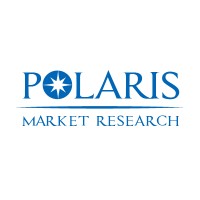The Polysilicon Market is experiencing robust growth, driven by surging global demand for renewable energy and the digital economy. As the key raw material used in both solar-grade polysilicon for photovoltaics and semiconductor manufacturing, polysilicon plays a vital role in enabling clean energy transformation and technological innovation.
With increasing solar panel installations worldwide and the rising need for microelectronics across consumer devices, automobiles, and industrial systems, polysilicon has become a strategic commodity. Governments, developers, and technology manufacturers are investing heavily in domestic production capacity and supply chain security, ensuring continued expansion of this essential material.
Global Polysilicon Market size and share is currently valued at USD 43.17 billion in 2024 and is anticipated to generate an estimated revenue of USD 141.71 billion by 2032, according to the latest study by Polaris Market Research. Besides, the report notes that the market exhibits a robust 16.00% Compound Annual Growth Rate (CAGR) over the forecasted timeframe, 2024 – 2032
Market Overview
Polysilicon is a high-purity form of silicon used predominantly in the photovoltaic industry and the semiconductor sector. It is produced through chemical vapor deposition (CVD) processes that convert metallurgical-grade silicon into ultra-pure crystalline form. Depending on its end use, polysilicon is categorized into solar-grade and electronic-grade material.
The solar-grade polysilicon segment dominates the market due to its critical application in crystalline silicon solar cells, which represent the majority of global solar panel installations. Meanwhile, the demand for ultra-pure electronic-grade polysilicon is growing alongside advances in logic chips, memory devices, and advanced computing applications.
Driven by decarbonization targets and 5G-led digitization, the global polysilicon market is poised for sustained growth across key economies.
Key Companies in the Polysilicon Market
- Daqo New Energy Corp.
- GCL Technology Holdings Co., Ltd.
- Hemlock Semiconductor Corporation
- Mitsubishi Materials Corporation
- OCI Company Limited
- Qatar Solar Technologies
- REC Silicon ASA
- Tokuyama Corporation
- Wacker Chemie AG
- Xinte Energy Co., Ltd.
Country-Wise Market Trends
China: Dominating Global Production and Domestic Demand
China continues to be the epicenter of the global polysilicon market, both as the largest producer and consumer. The nation’s expansive photovoltaic industry and policy-driven solar installation targets have created massive demand for solar-grade polysilicon. Over the past decade, China has rapidly scaled up domestic polysilicon production to reduce import dependency and become a leading supplier to the global market.
In 2025, China’s market remains highly dynamic, with strong demand from the central government’s push for grid parity and energy security. High-efficiency modules like PERC, TOPCon, and HJT—all reliant on high-purity polysilicon—are gaining ground, necessitating continual upgrades in production technology.
Additionally, China’s semiconductor sector is expanding aggressively under national self-reliance initiatives. This has led to increased consumption of electronic-grade polysilicon for semiconductor manufacturing, including wafers for integrated circuits and memory chips.
Environmental regulations have also led to greater emphasis on low-carbon polysilicon production techniques, such as fluidized bed reactors (FBR), supporting the green energy agenda.
United States: Semiconductor Demand and Strategic Supply Chain Realignment
In the United States, polysilicon demand is being propelled by the dual forces of solar adoption and national efforts to revitalize the domestic semiconductor manufacturing ecosystem. Federal incentives and infrastructure policies aimed at reshoring high-tech manufacturing have stimulated polysilicon consumption for wafer fabrication.
While the U.S. has traditionally had a limited share of global solar-grade polysilicon production, recent policy shifts and trade realignments are encouraging the expansion of domestic capacities. Rising interest in crystalline silicon solar panels, particularly among utility-scale solar farm developers, further supports market growth.
Moreover, the U.S. semiconductor boom—spanning AI, quantum computing, and electric vehicles—is increasing demand for ultra-pure polysilicon, especially as chip fabs multiply across the Midwest and Southwest.
Regulatory support, clean energy goals, and technological modernization efforts position the U.S. as a high-potential growth market for both solar and electronic polysilicon applications.
Germany: High-Tech Innovation Meets Renewable Energy Goals
Germany, known for its precision manufacturing and green leadership, maintains a strong footprint in the polysilicon industry. While the country no longer dominates polysilicon production volumes, its technological advancements in high-purity solar-grade polysilicon continue to set benchmarks for quality and efficiency.
The German photovoltaic industry is regaining momentum amid the European Union’s push for energy sovereignty and decarbonization. The need for localized, sustainable solar supply chains has renewed interest in domestic polysilicon capabilities.
Germany’s semiconductor demand is also on the rise, driven by automotive electrification and industrial automation. Advanced chip designs for sensors, microcontrollers, and AI hardware require precision-grade crystalline silicon, furthering the role of polysilicon in the German economy.
Research and development in cleaner and more efficient polysilicon production techniques—such as low-temperature deposition and alternative chlorosilane processes—are reinforcing Germany’s position as a center for innovation.
India: Surging Solar Adoption Accelerates Domestic Production Plans
India is emerging as a key growth driver in the global polysilicon market, propelled by aggressive solar deployment targets under its National Solar Mission. With a goal of achieving 500 GW of non-fossil fuel capacity by 2030, the demand for solar-grade polysilicon is rising exponentially.
Until recently, India has depended heavily on imports for its solar cell manufacturing needs, particularly for crystalline silicon wafers. However, a growing policy emphasis on self-sufficiency, including Production-Linked Incentives (PLIs), is incentivizing the establishment of domestic polysilicon production facilities.
India’s tropical climate and high irradiation levels offer tremendous solar energy potential, and the push toward grid integration and rural electrification is increasing the demand for both rooftop and utility-scale PV systems.
While semiconductor applications are still in the early stages, India’s focus on becoming a hub for electronics manufacturing could spur long-term growth in semiconductor manufacturing-related polysilicon use.
South Korea: Leading Semiconductor Powerhouse with Targeted Solar Growth
South Korea remains a global leader in semiconductor manufacturing, consuming significant volumes of electronic-grade polysilicon. Home to some of the world’s most advanced chip fabrication processes, South Korea demands ultra-pure crystalline material for logic and memory devices used in mobile, automotive, and AI applications.
As semiconductor nodes shrink below 5nm, the importance of impurity-free polysilicon becomes even more critical. South Korea’s focus on R&D and capital-intensive chip production is keeping polysilicon consumption elevated.
On the solar front, the government’s Renewable Energy 3020 policy aims to increase the share of renewable energy in the country’s energy mix. While the domestic solar module market is smaller compared to global peers, interest in solar-grade polysilicon is growing due to a national drive for clean and secure energy alternatives.
The synergy between high-tech manufacturing and sustainable development makes South Korea a uniquely positioned market for future polysilicon innovation and application.
Emerging Themes in the Global Polysilicon Market
Across regions, several key trends are reshaping the polysilicon industry:
-
Vertical integration is gaining traction, especially in countries aiming for supply chain sovereignty in solar and semiconductor sectors.
-
Innovations in fluidized bed reactor (FBR) technology are making polysilicon production more energy-efficient and environmentally friendly.
-
The global shift to crystalline silicon PERC and N-type technologies is creating demand for higher-purity and lower-cost polysilicon feedstock.
-
Governments are implementing strategic reserves and subsidies to mitigate price volatility and ensure domestic availability during geopolitical disruptions.
Additionally, recycling and circular economy models are beginning to influence procurement practices, with efforts underway to reclaim polysilicon from end-of-life solar panels and electronics.
Explore More:
https://www.polarismarketresearch.com/industry-analysis/polysilicon-market
Conclusion
The polysilicon market is navigating a phase of global recalibration—driven by the rapid ascent of solar energy, the evolution of the semiconductor manufacturing landscape, and increasing efforts to localize high-value technology supply chains.
From Asia’s production strongholds to emerging consumer markets in Europe and the Americas, polysilicon is at the crossroads of climate action and digital innovation. As nations deepen their commitments to sustainable development and technological competitiveness, the demand for high-purity solar-grade polysilicon and electronic-grade crystalline silicon is expected to remain strong through 2030 and beyond.
Through collaborative policy, investment in clean production technologies, and innovation-driven ecosystems, the global polysilicon industry is poised to play a pivotal role in shaping a more connected and carbon-neutral future.
More Trending Latest Reports By Polaris Market Research:
Non-Dispersive Infrared (NDIR) Market
Interposer and Fan-out Wafer Level Packaging Market
Making It Possible With Thin-Film Encapsulation (TFE) Market









